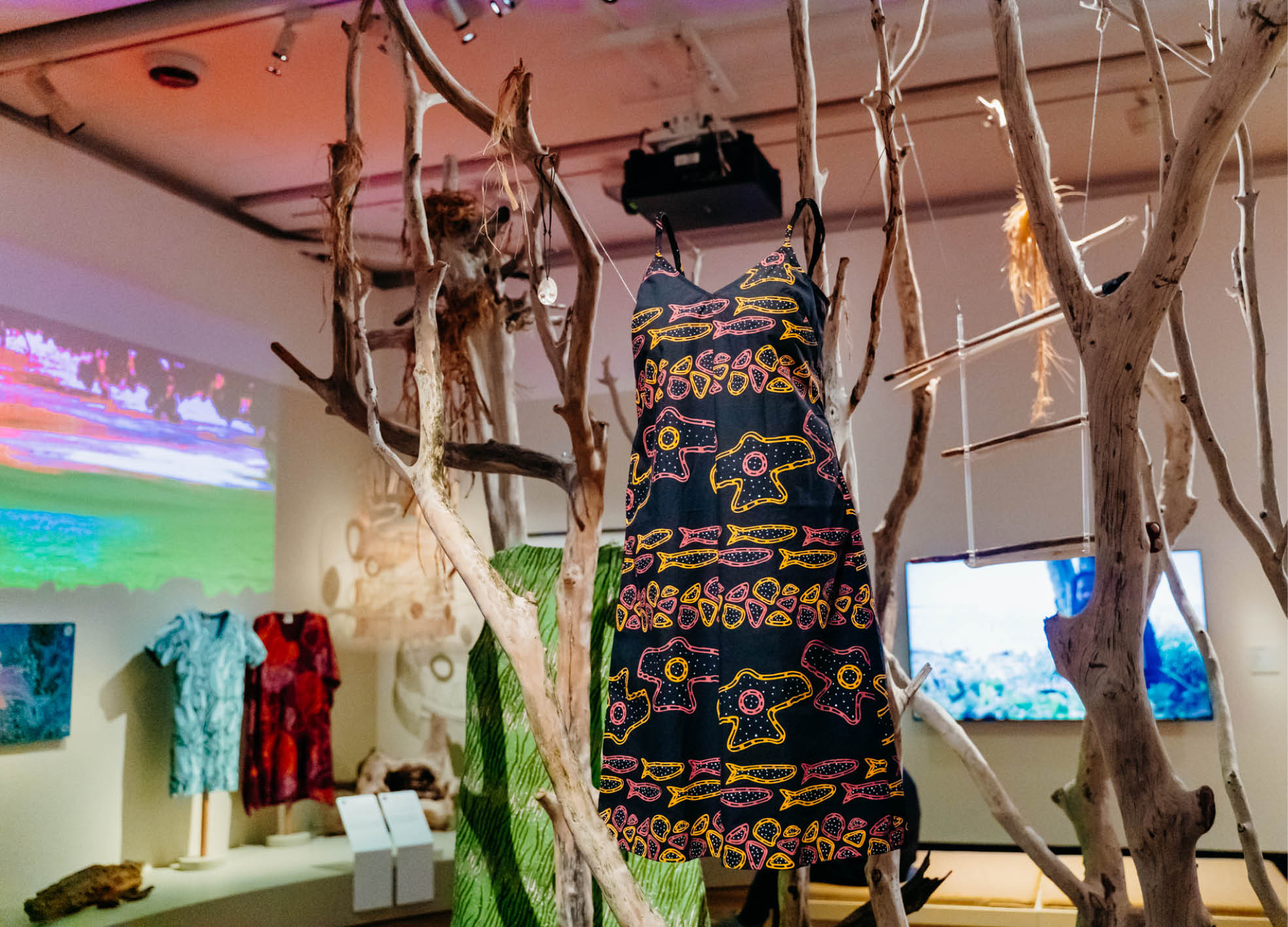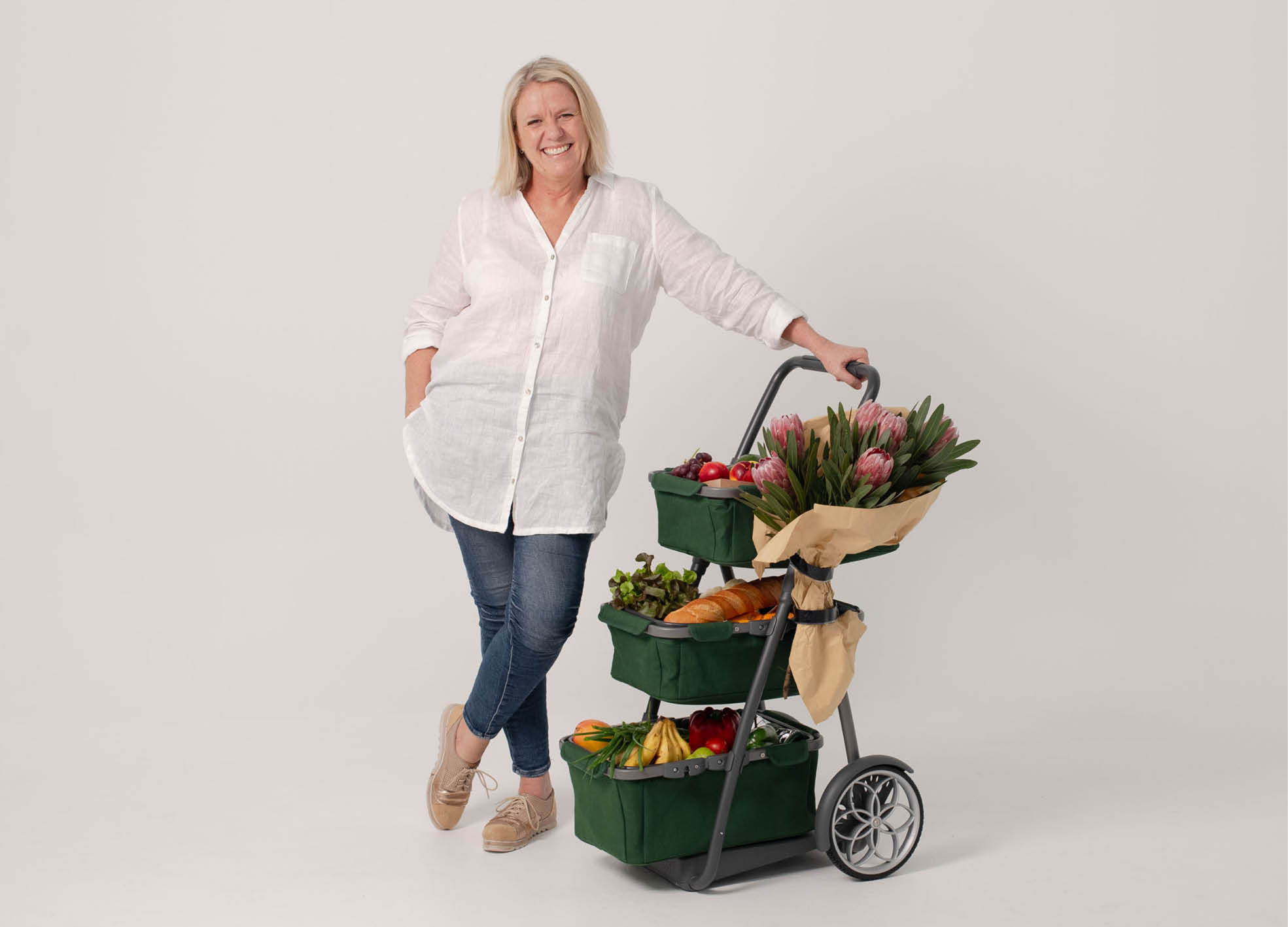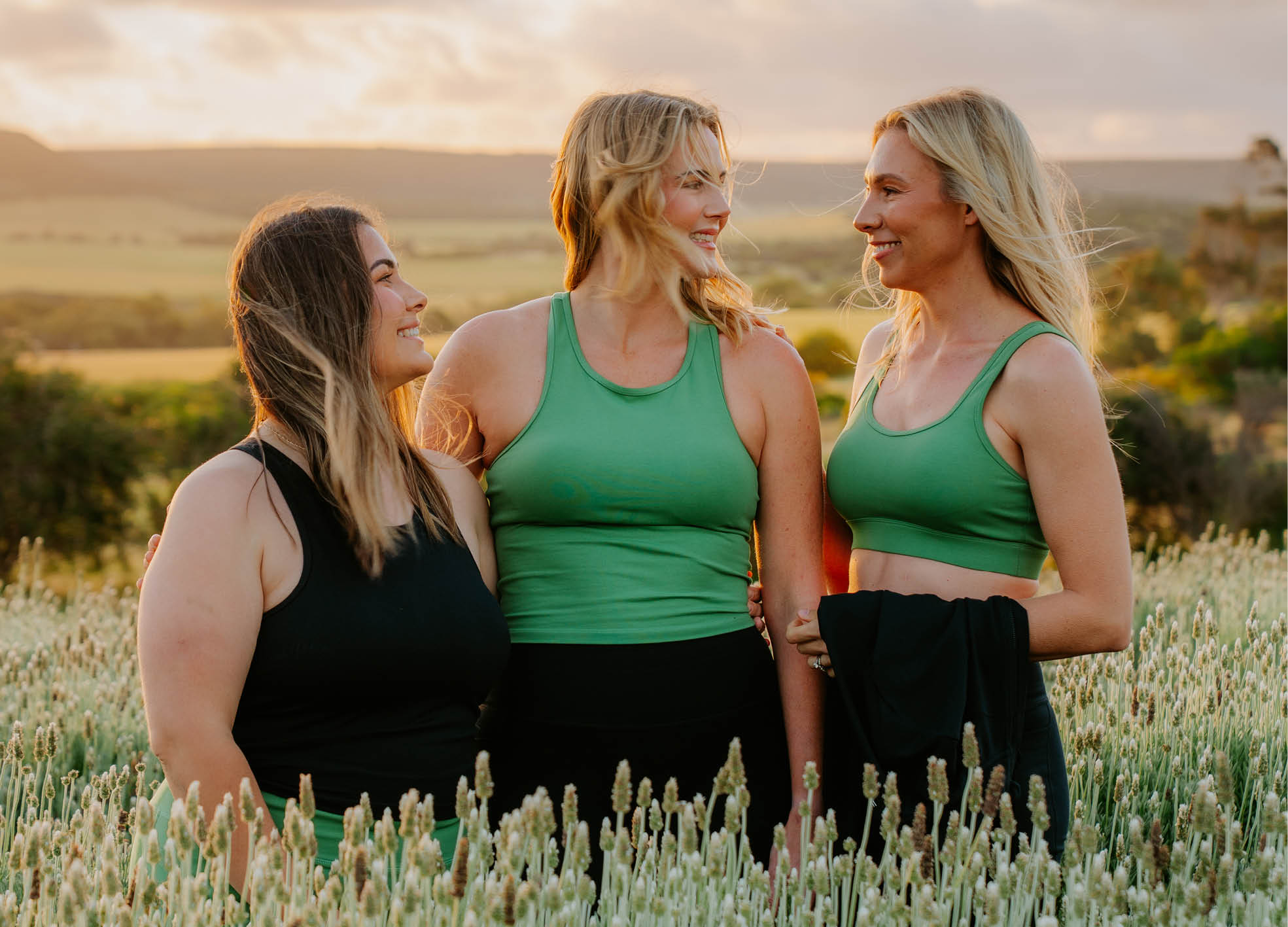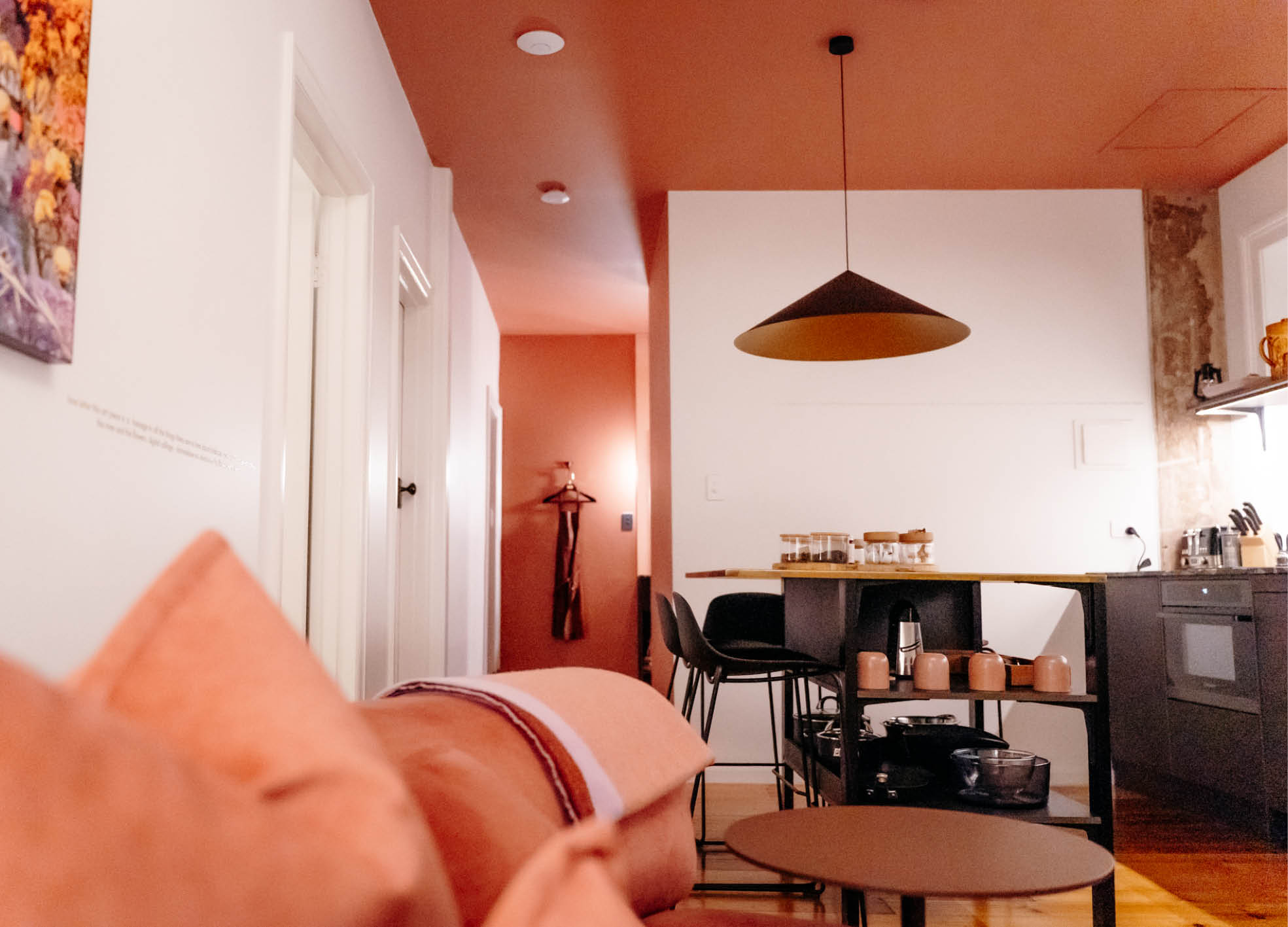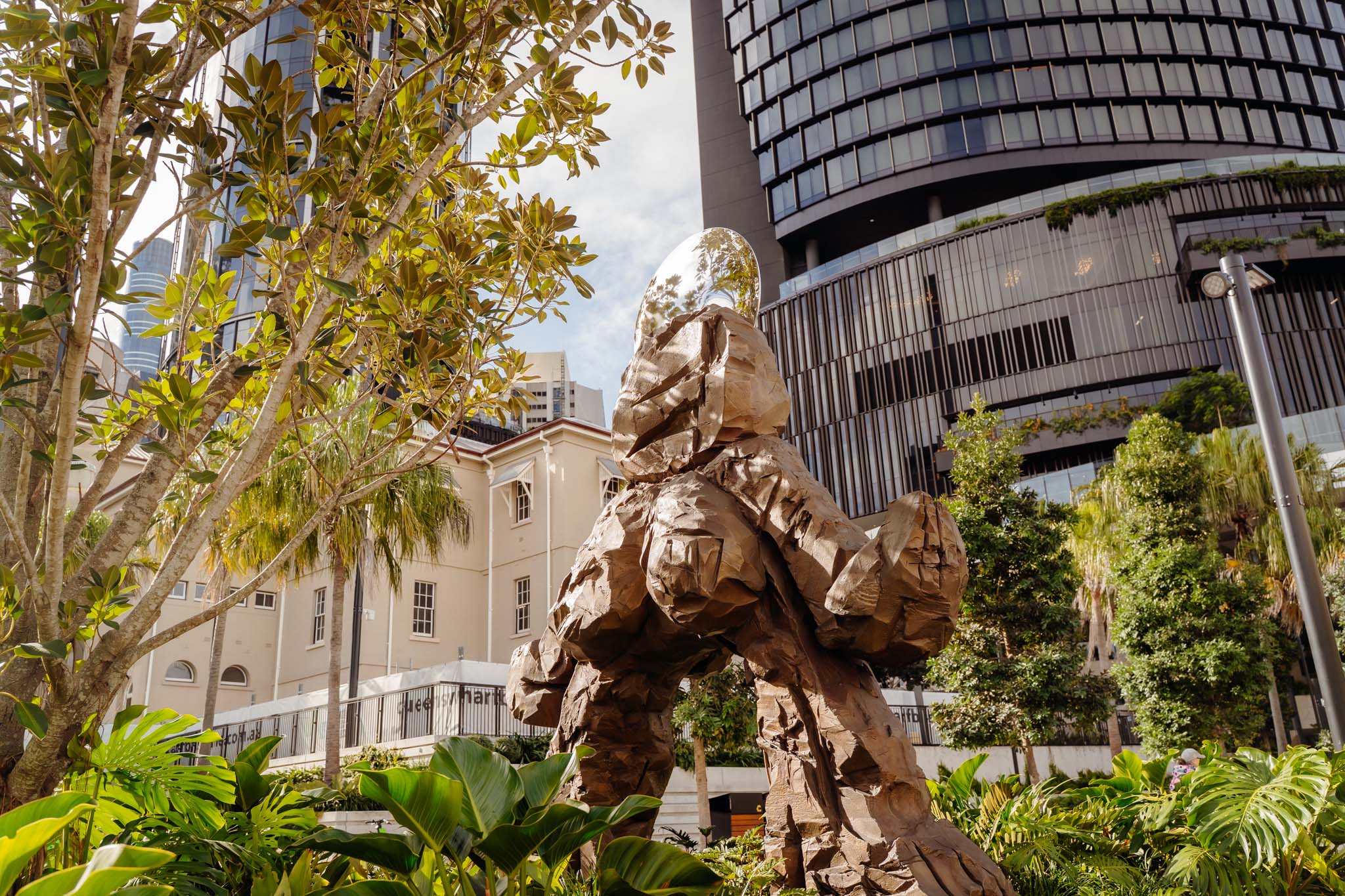Just Keep Growing – How to Make Your Very Own DIY Fabric Planters
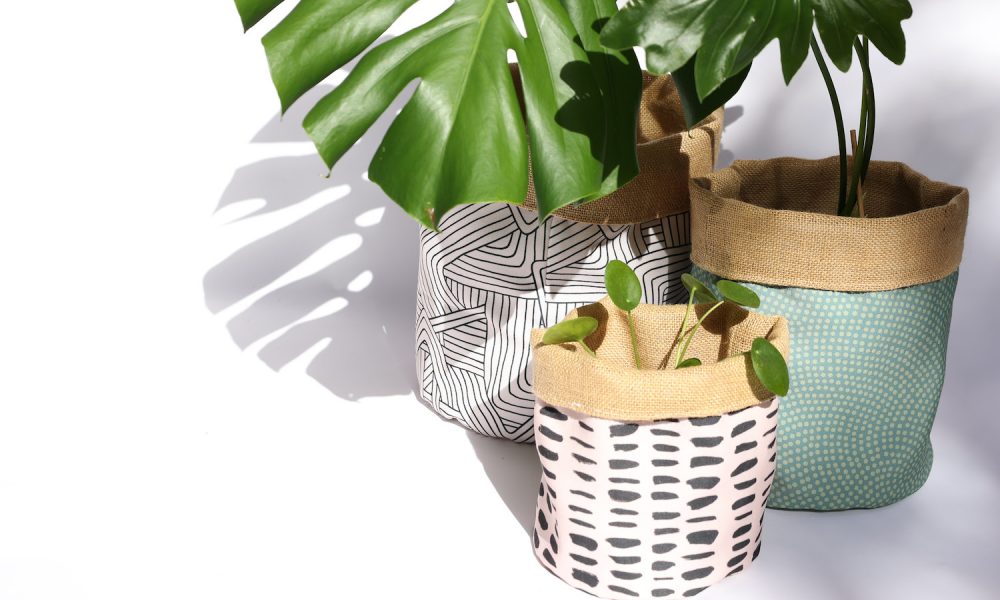
- Words by Peppermint
We’re not the first to sing the praises of plants, nor the benefits of getting crafty with your hands, but hear this stitchy pals: sewing up cosy, colourful fabric homes for your houseplants might just be the best of both worlds! Not only are these DIY fabric planters quick and easy to sew, they’re reversible, washable and the perfect scrap-busting project. They also make rather excellent gifts for your plant-loving pals. But who are we kidding… you’ll probably want to keep them for yourself.
Have fun mixing and matching prints, colour block to your heart’s content or play with texture by adding a hessian lining like we did here. And hey, there’s no reason to limit these to plants. You could create a set of three nesting pots for storing fabric scraps, sewing supplies, knitting projects or whatever odds and ends need a new home.
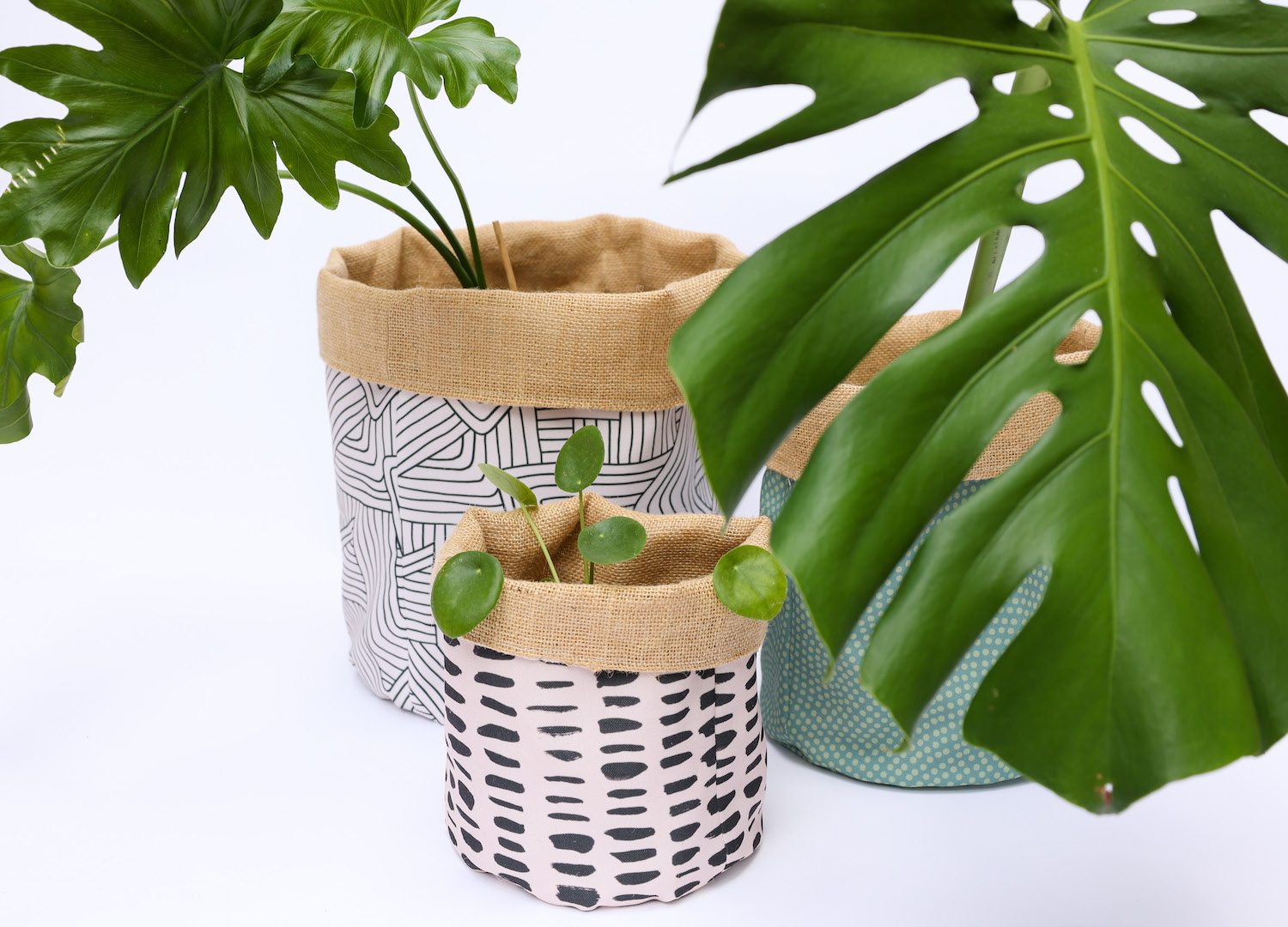
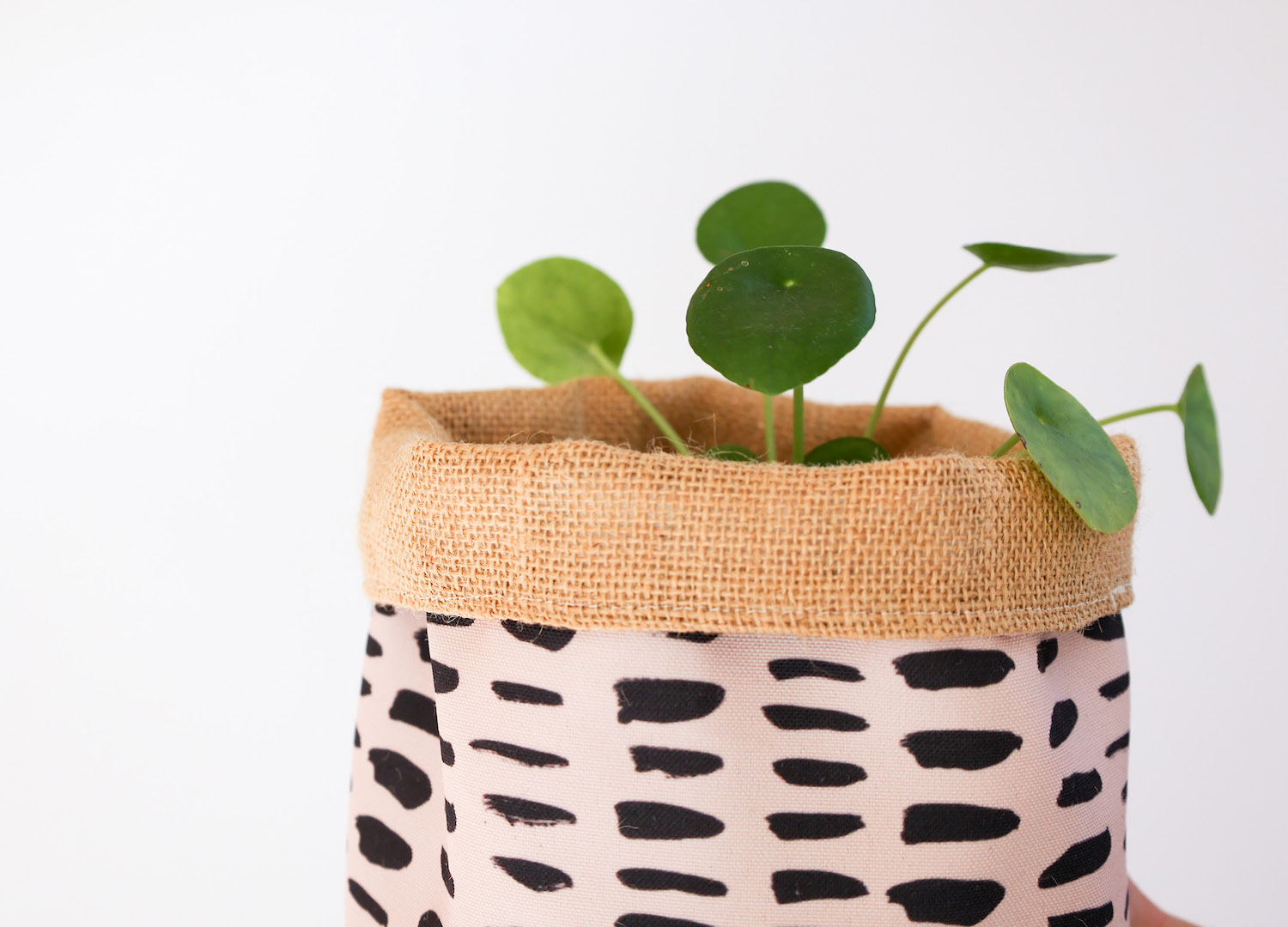
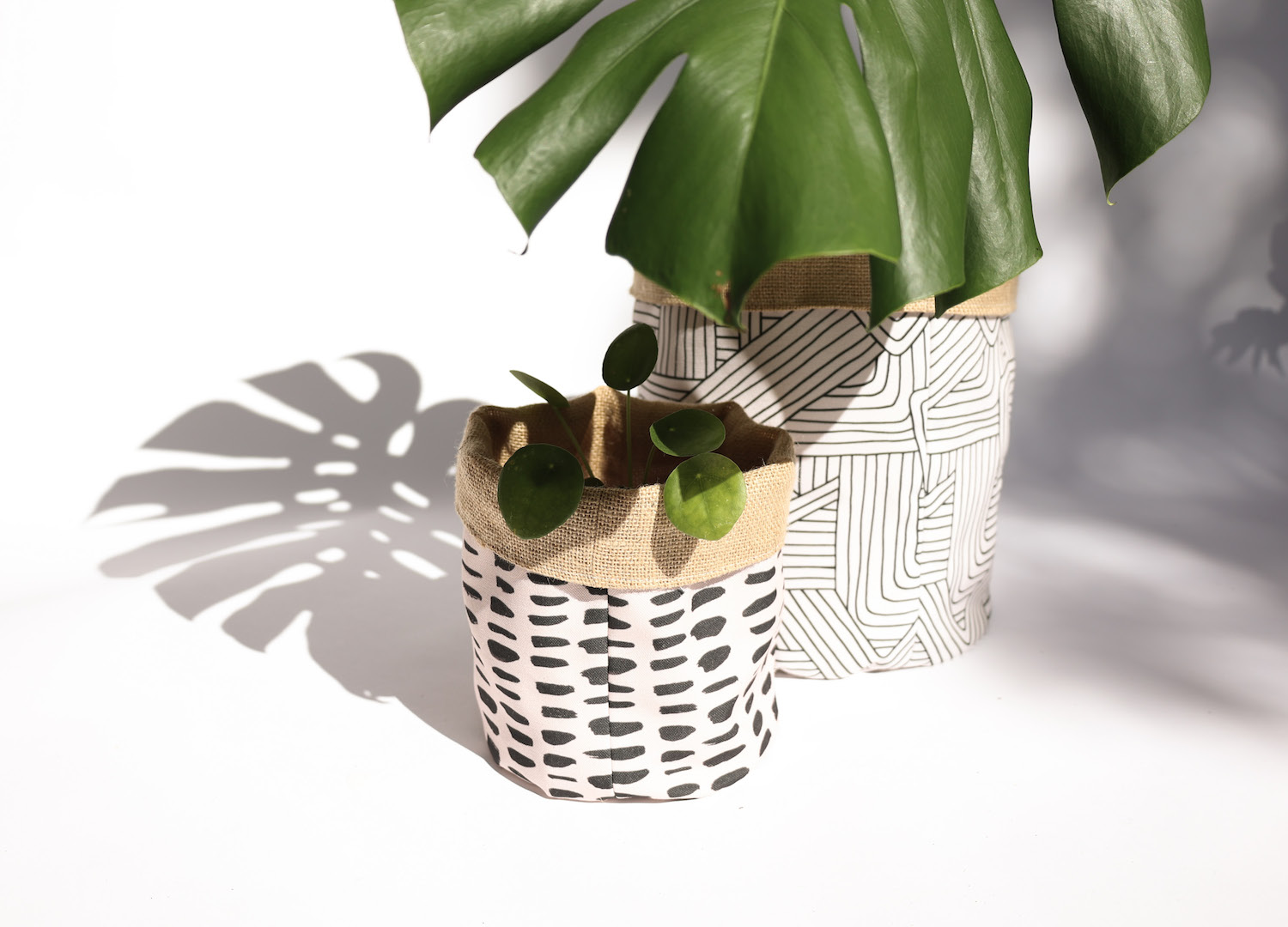
Sizing Your Planter
Because houseplants come in all different shapes and sizes, we created this tutorial using a simple formula that will allow you to sew any size planter you could dream of! If you already have a plant you’d like to create a home for, you can use its base to create a template. If you don’t have a specific plant in mind, why not start with one of the three sizes below. Some plant pots will widen towards the top, so make sure your planter is large enough to allow for wiggle room so you can get your favourite plant in and out without too much distress.
The template for the planter is made up of two pieces: a circle (base) and rectangle (the sides). You can create the template out of scrap paper or draw the dimensions directly onto the back of your fabric.
Create Your Template

STEP ONE // Trace around a circular pot base onto a scrap piece of paper or directly onto the back of the fabric.
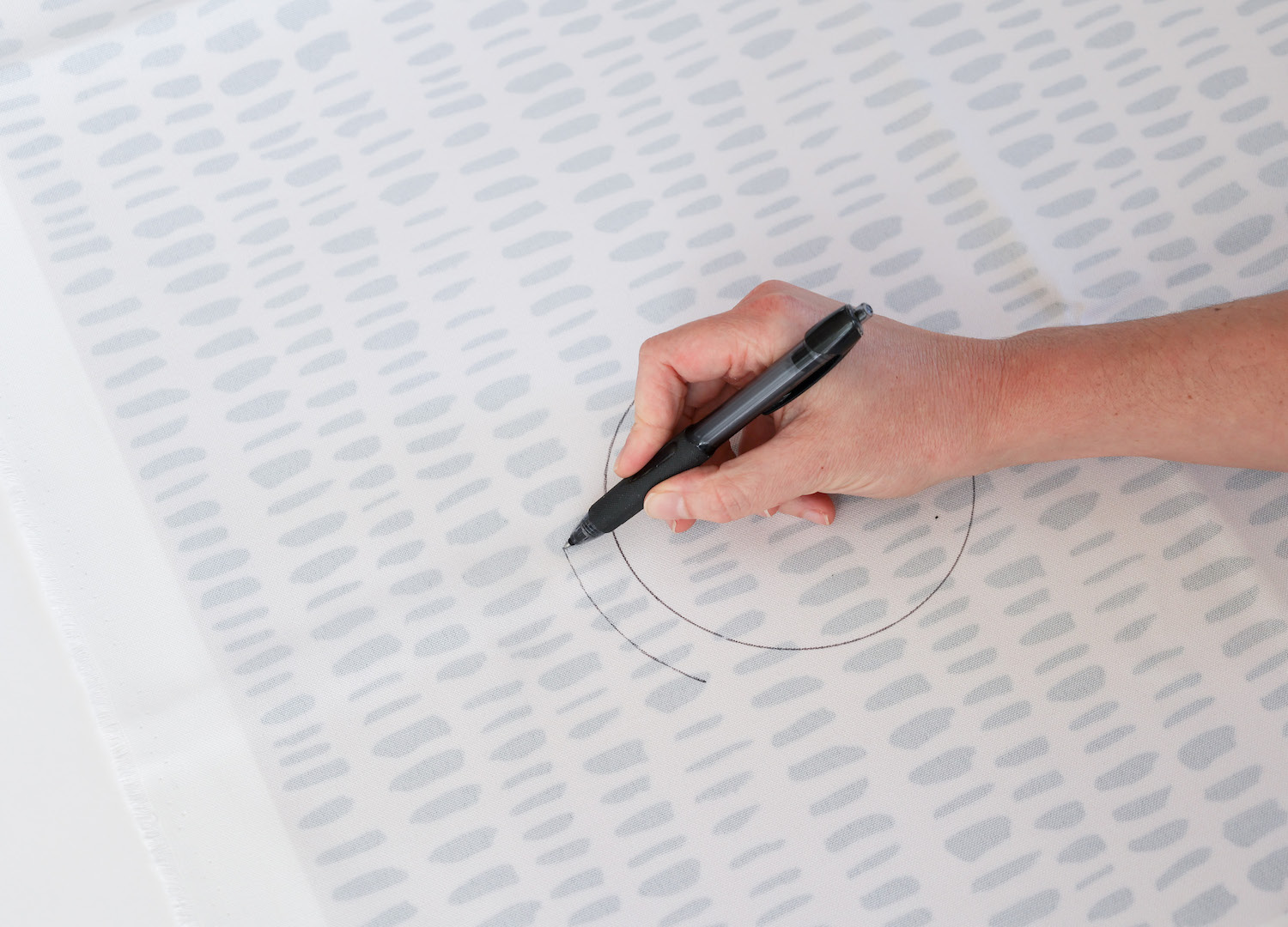
STEP TWO // Draw a second circle around the outside of the first, 2cm wider in all directions to accommodate a 1cm seam allowance and wiggle room.
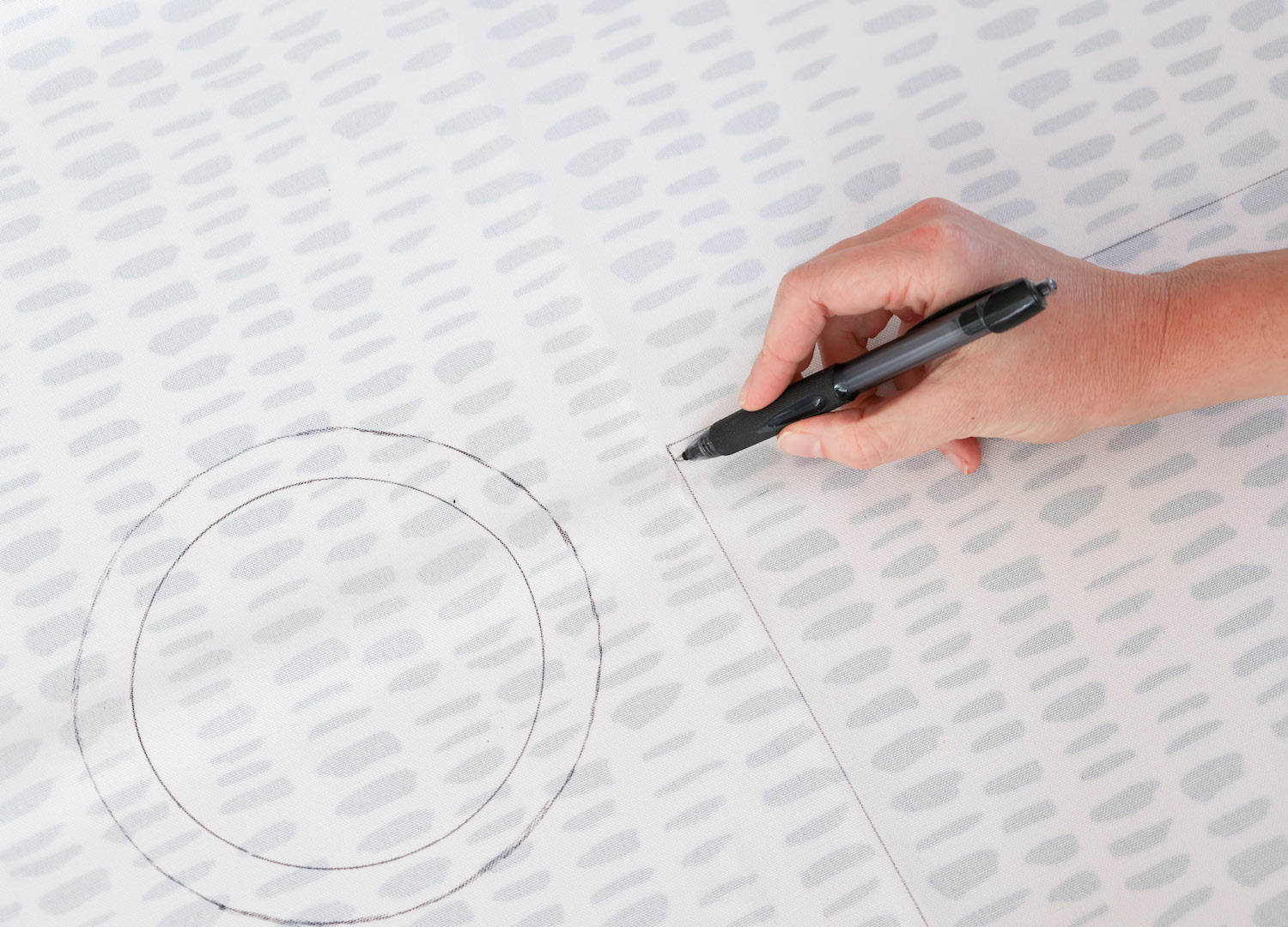
STEP THREE // To calculate the length of the rectangle, multiple the diameter of the largest circle you’ve just drawn by pi (~3.14).
Example: for a 17cm diameter base, the length of the rectangle is 17cm x 3.14 = 51.38cm.
STEP FOUR // Decide how tall you would like the planter, as this measurement will become the width of the rectangle template piece: for the small size planter, we measured a height of 22cm (remembering you have the option to fold down the top of the planter 5cm or so once finished). Add 1cm seam allowance at each end = 24cm
In this example, the final dimensions for the rectangle template are: length = 51.38cm x width = 24cm
READY TO GO TEMPLATES
Small Circle diameter= 17cm | Rectangle length 51.38cm x width 24cm
Medium Circle diameter = 21cm | Rectangle length 65.94cm x width 28cm
Large Circle diameter = 24cm | Rectangle length 78.5cm x width 35cm
Suggested Fabrics
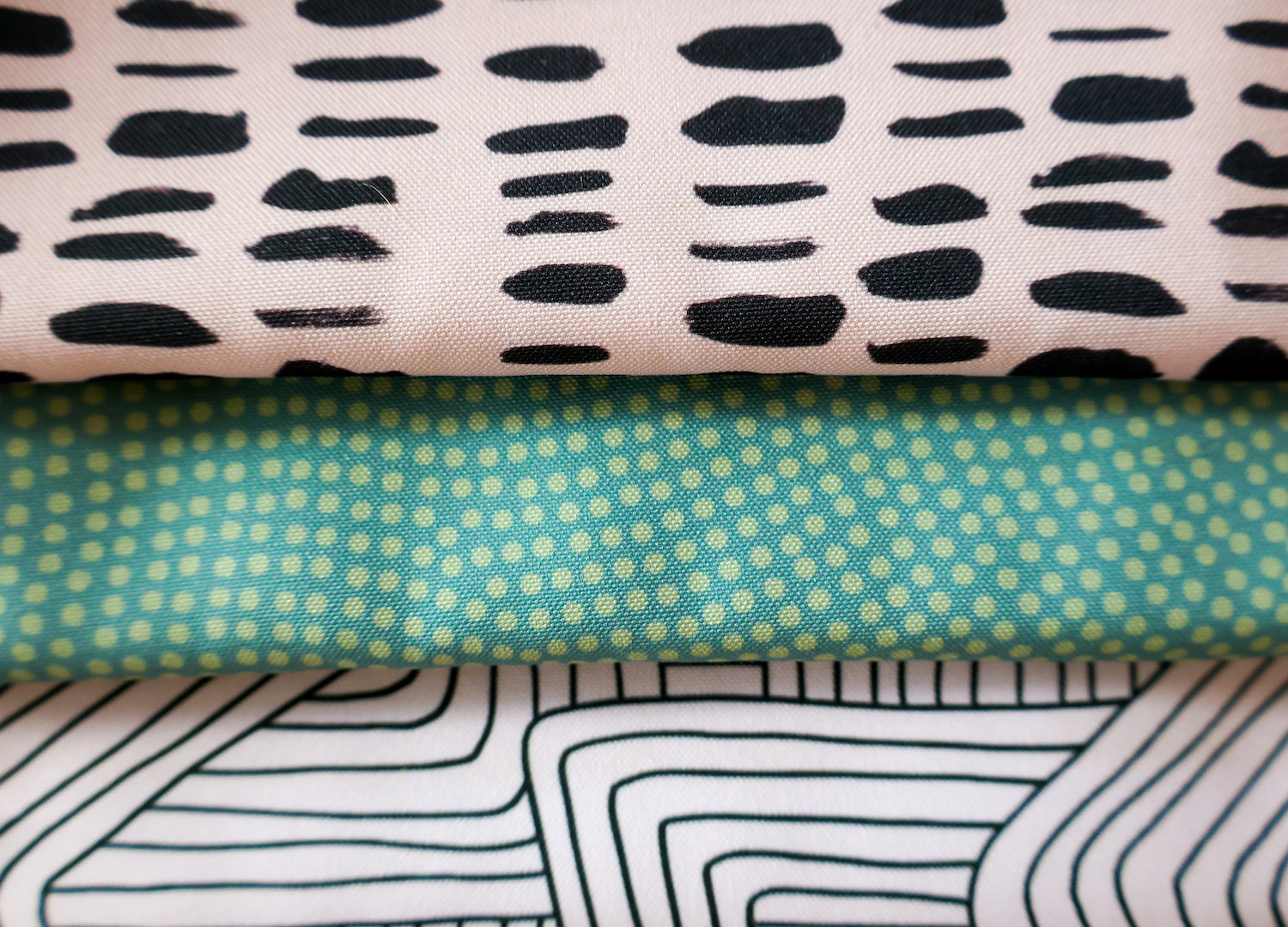
To give your new fabric planter a long and happy life, we’d recommend choosing a home-decor weight material like canvas, for at least one of the layers. You could even use completely upcycled fabrics (here’s some helpful ideas of where to source quality secondhand textiles) or retired coffee sacks.
For this tutorial, we were excited to try out the new recycled canvas from Spoonflower: a woven, upholstery weight fabric made from Repreve (50% recycled polyester fibre).
PRINT ONE // Fibonacci-flower Polkadots by Weaving Major
PRINT TWO // Black and Tan by Briana Corr Scott
PRINT THREE // Little Maze Stripes by Little Smile Makers

What you will need
Fabric for outer
Fabric for lining
Sewing machine and thread
Tape measure
Scissors
Pins
Pen or fabric marker
Let’s get making!
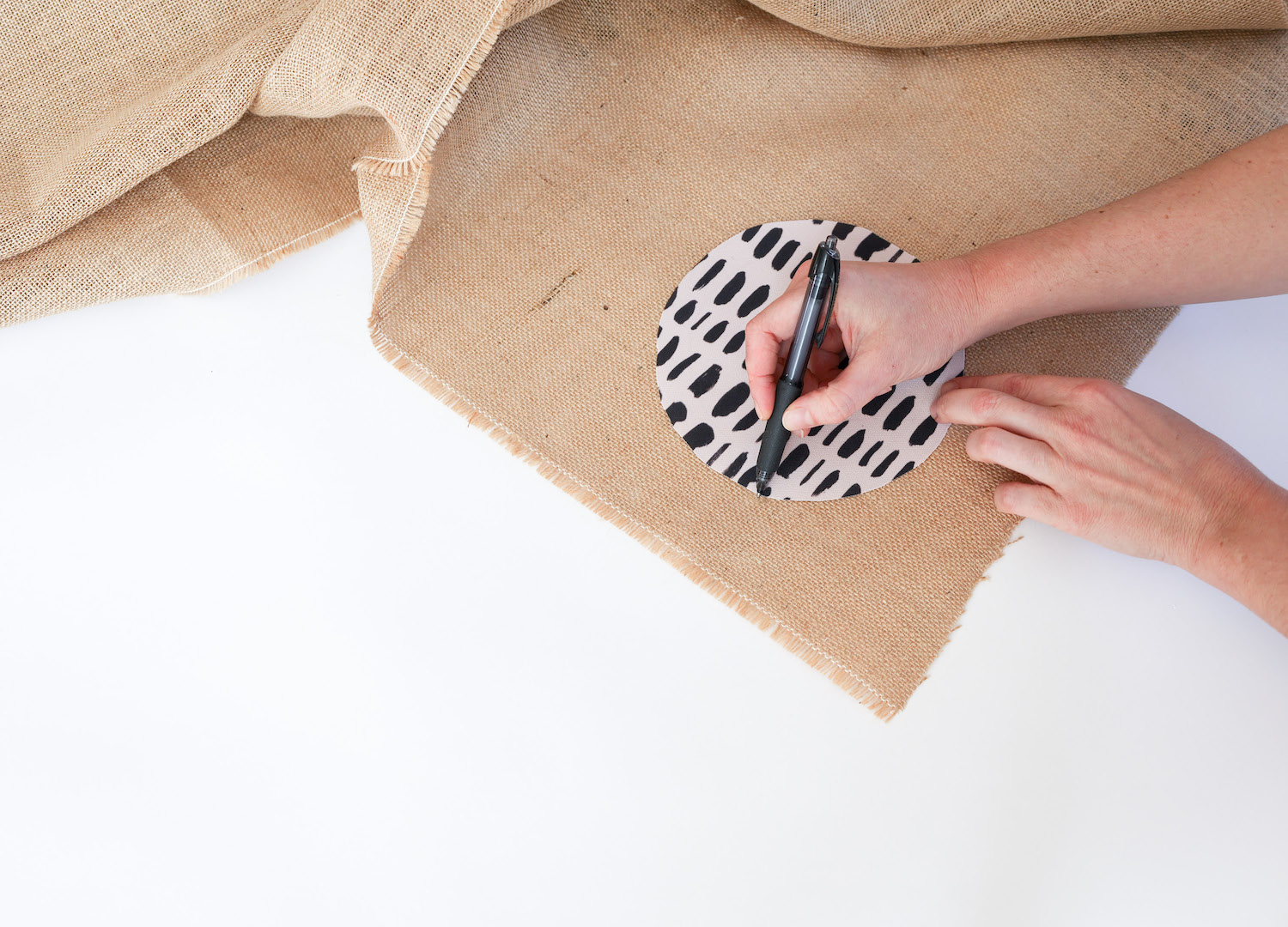
STEP ONE // Once you’ve created your template, trace out the dimensions of the rectangle and circle directly onto the fabric for the main (outer) and lining (inner) pieces.
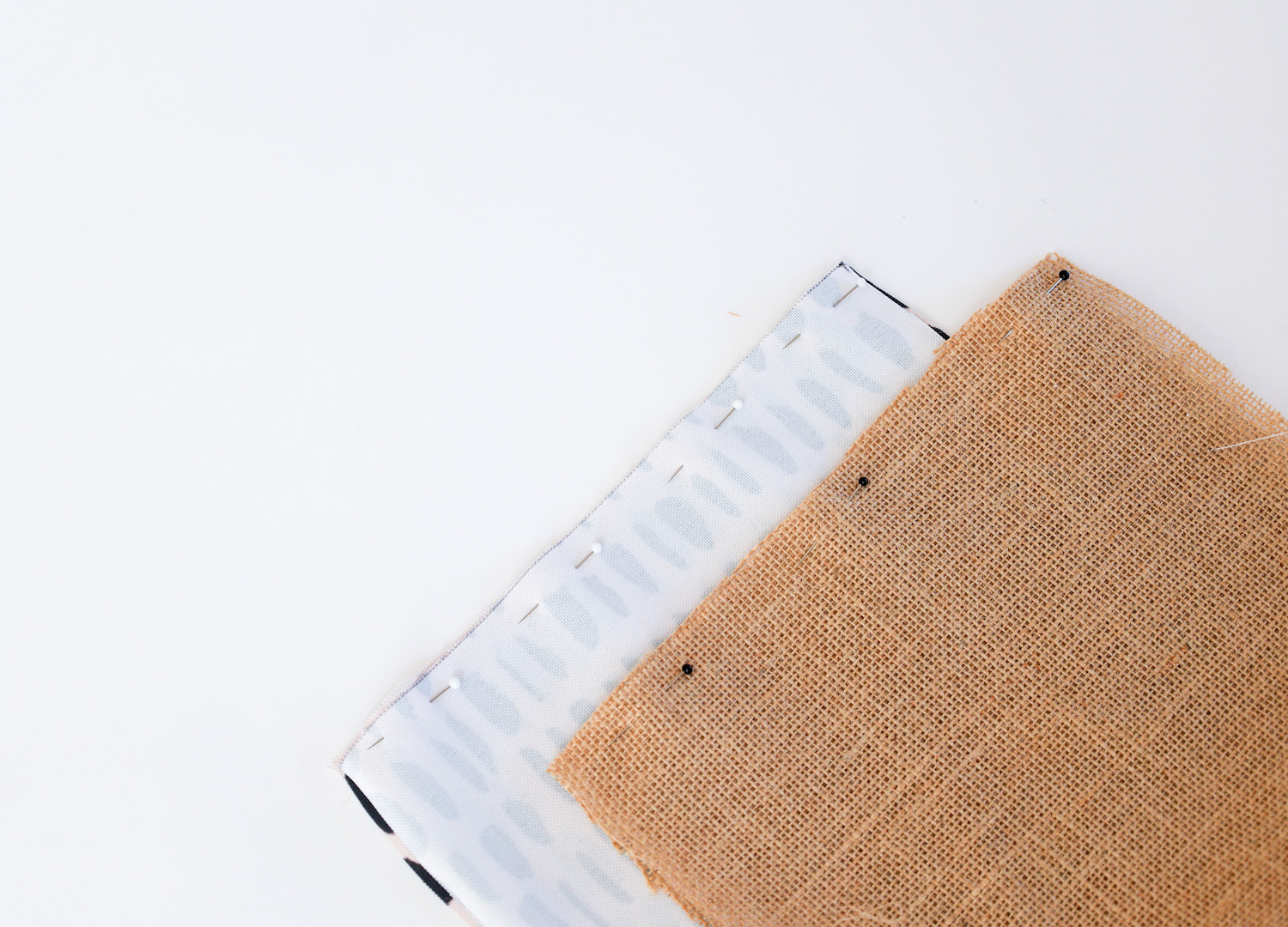
STEP TWO // Take the rectangle you cut from the main fabric and with right sides facing, sew the short ends together with a 1cm seam allowance. Press the seam open. You now have a tube!
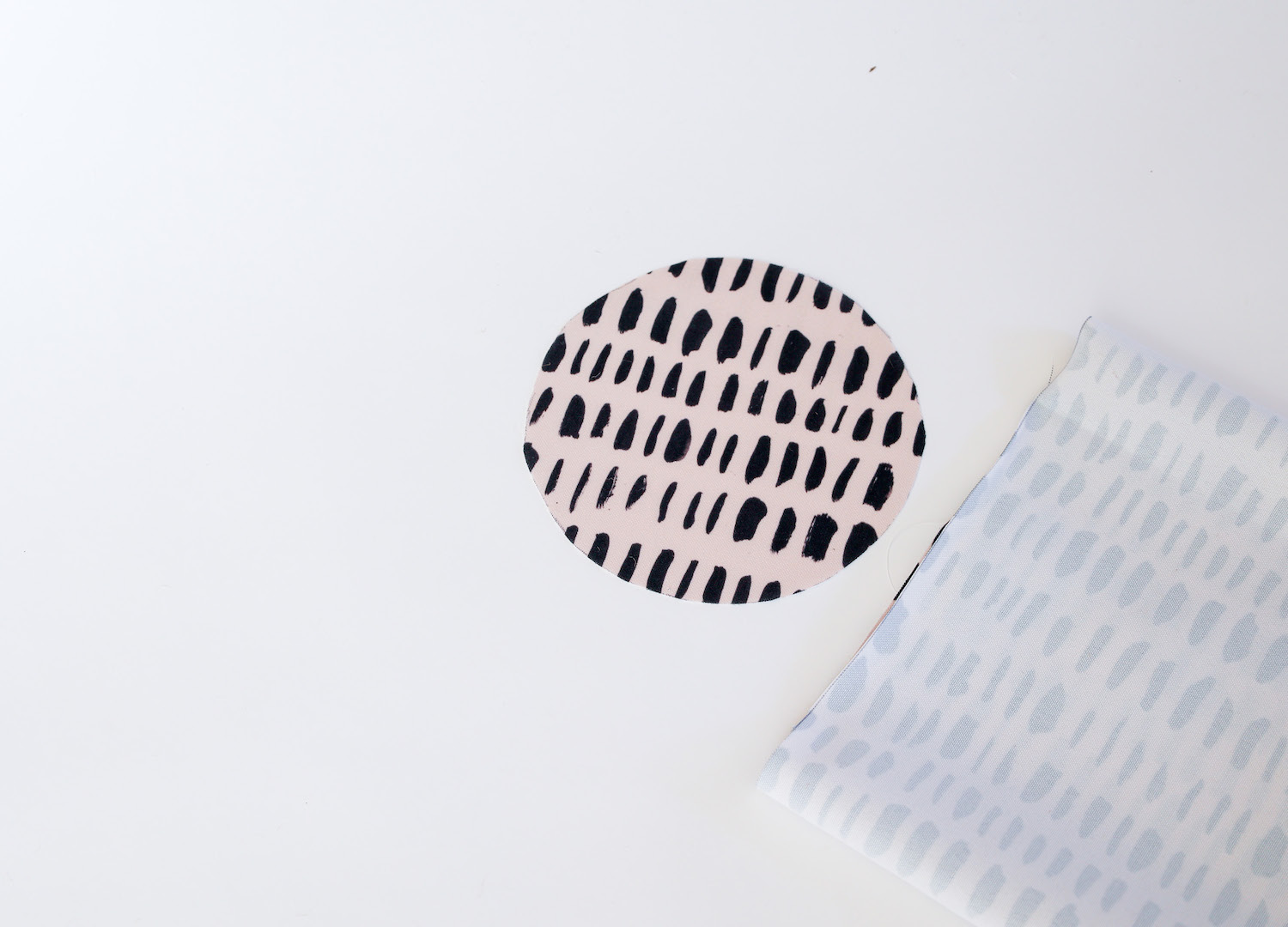
STEP THREE // With right sides together and raw edges aligned, pin the circular base to the inside of the rectangle loop. This may take a bit of manoeuvring!
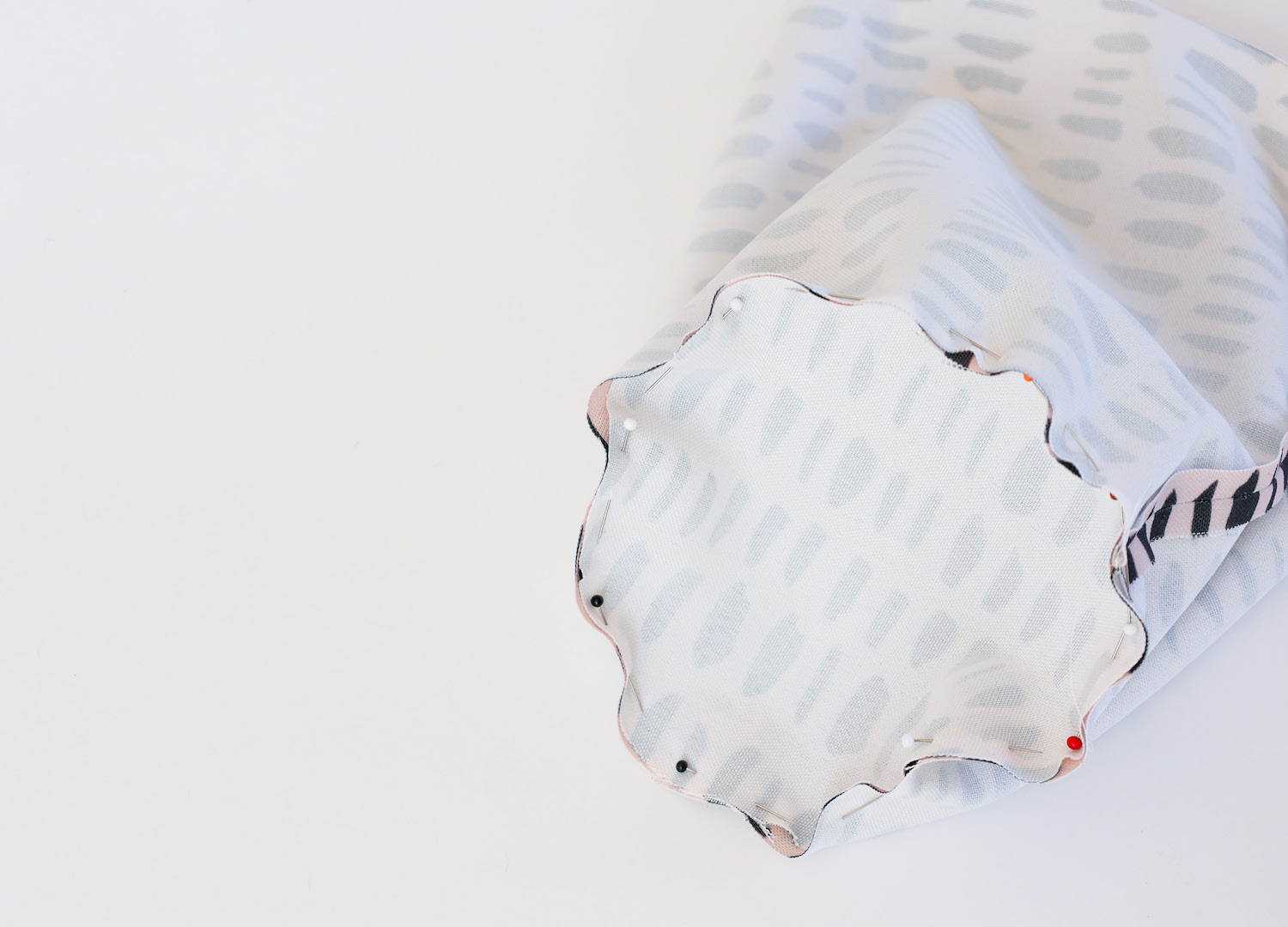
STEP FOUR // Sew base and rectangle together with a 1cm seam allowance. Go slowly and rotate the fabric around in sections.
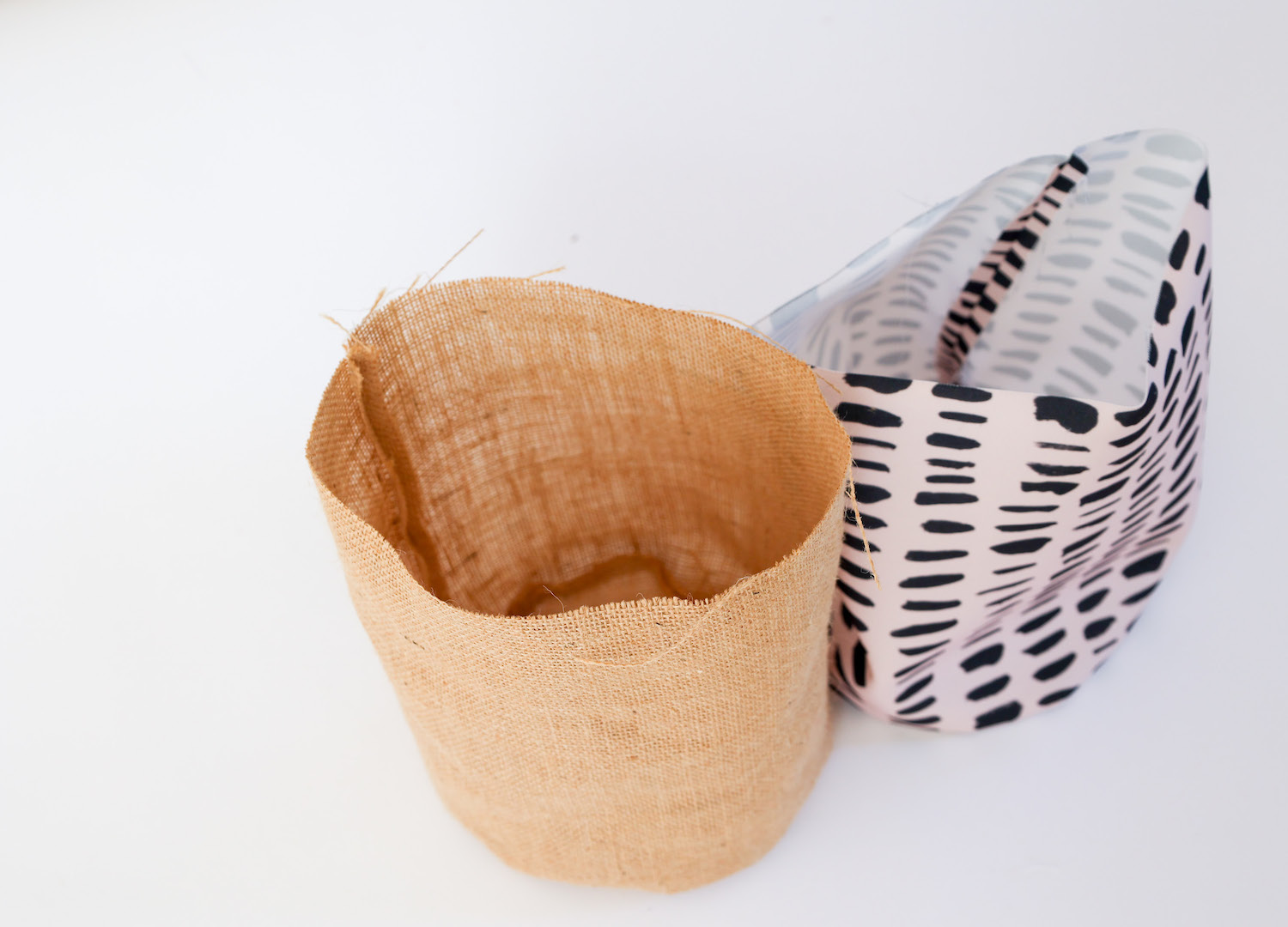
STEP FIVE // Repeat steps two to four for the lining (inner) fabric. You will now have an outer basket and an inner basket… Halfway there!
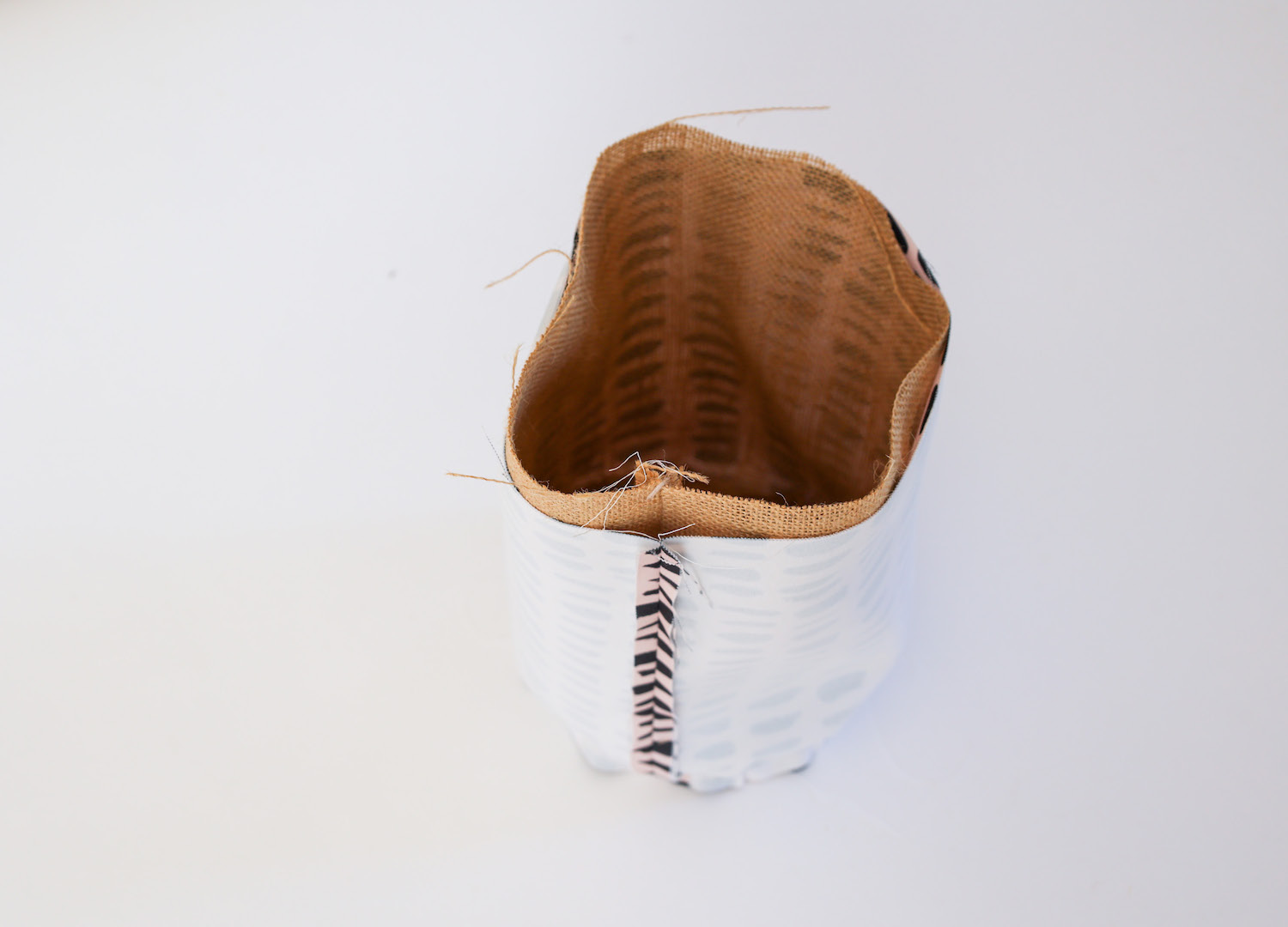
STEP SIX // Turn the outer basket to face the inside and place the lining basket inside the outer, with right sides of the fabric facing each other. Line up the raw edge and pin in place.
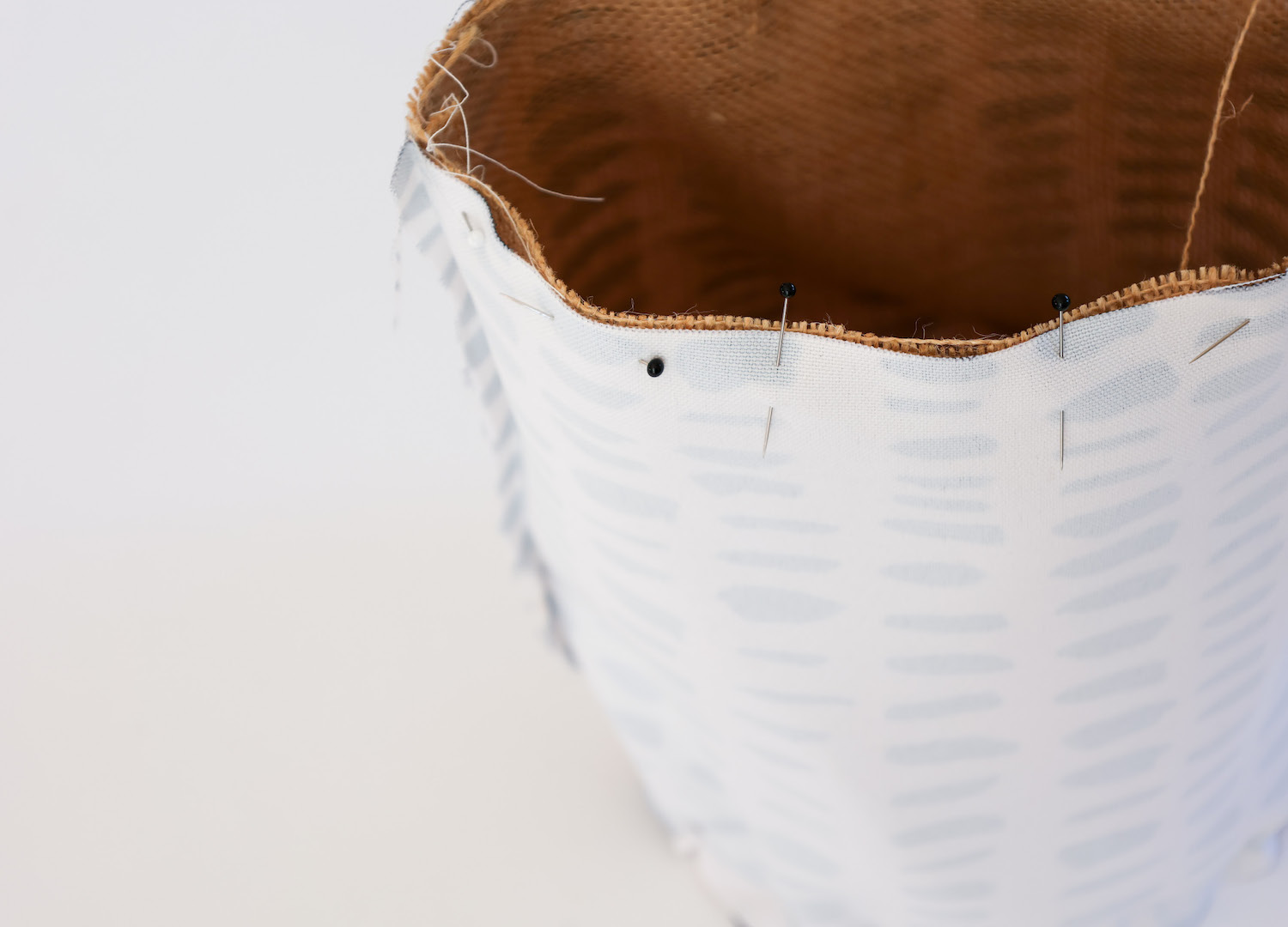
STEP SEVEN // Sew together with a 1cm seam allowance, leaving a gap of 5cm (back stitching at start and end) to turn out the right way.
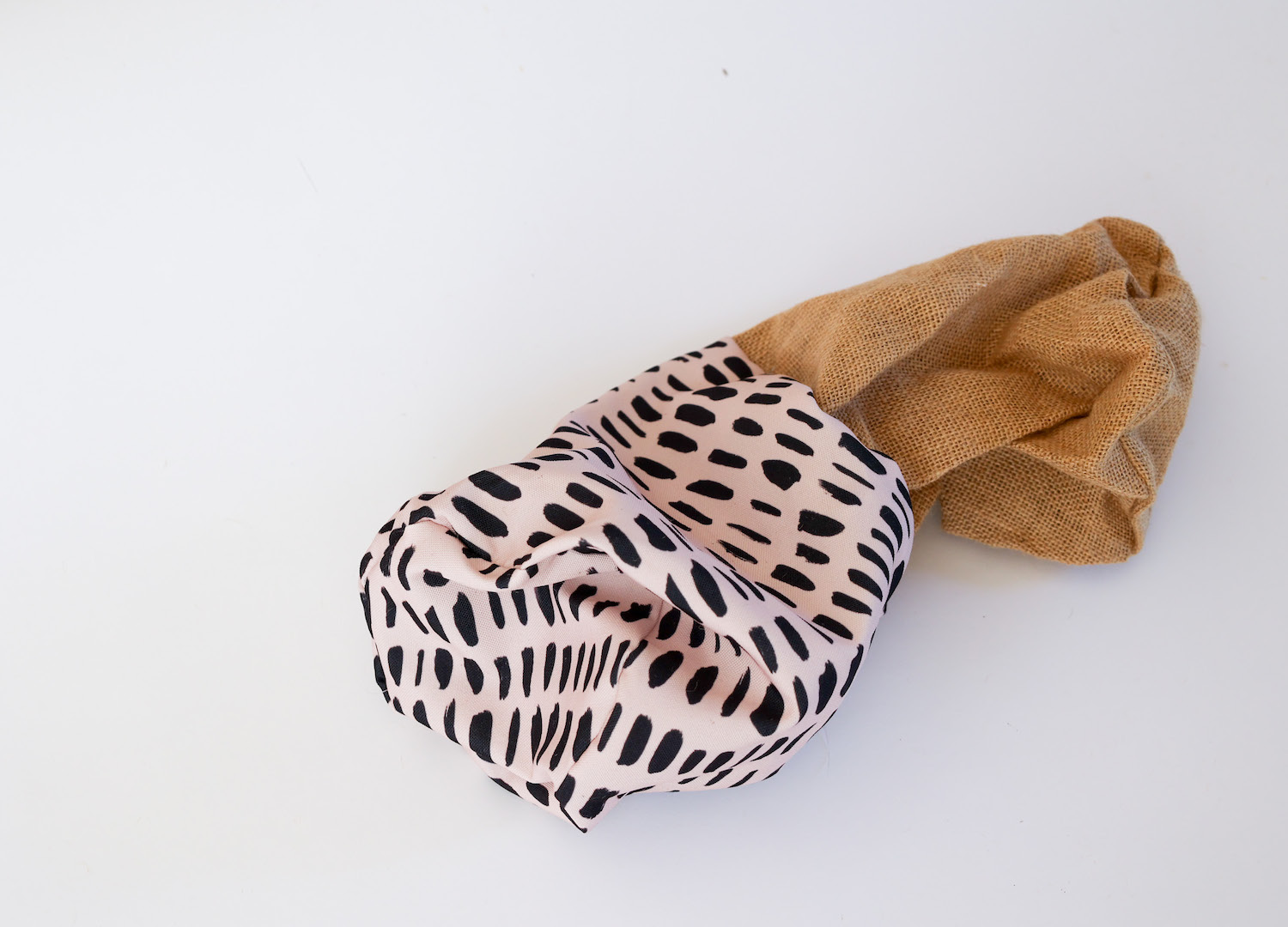
STEP EIGHT // Turn out the right way by gently pulling the fabric through the opening.
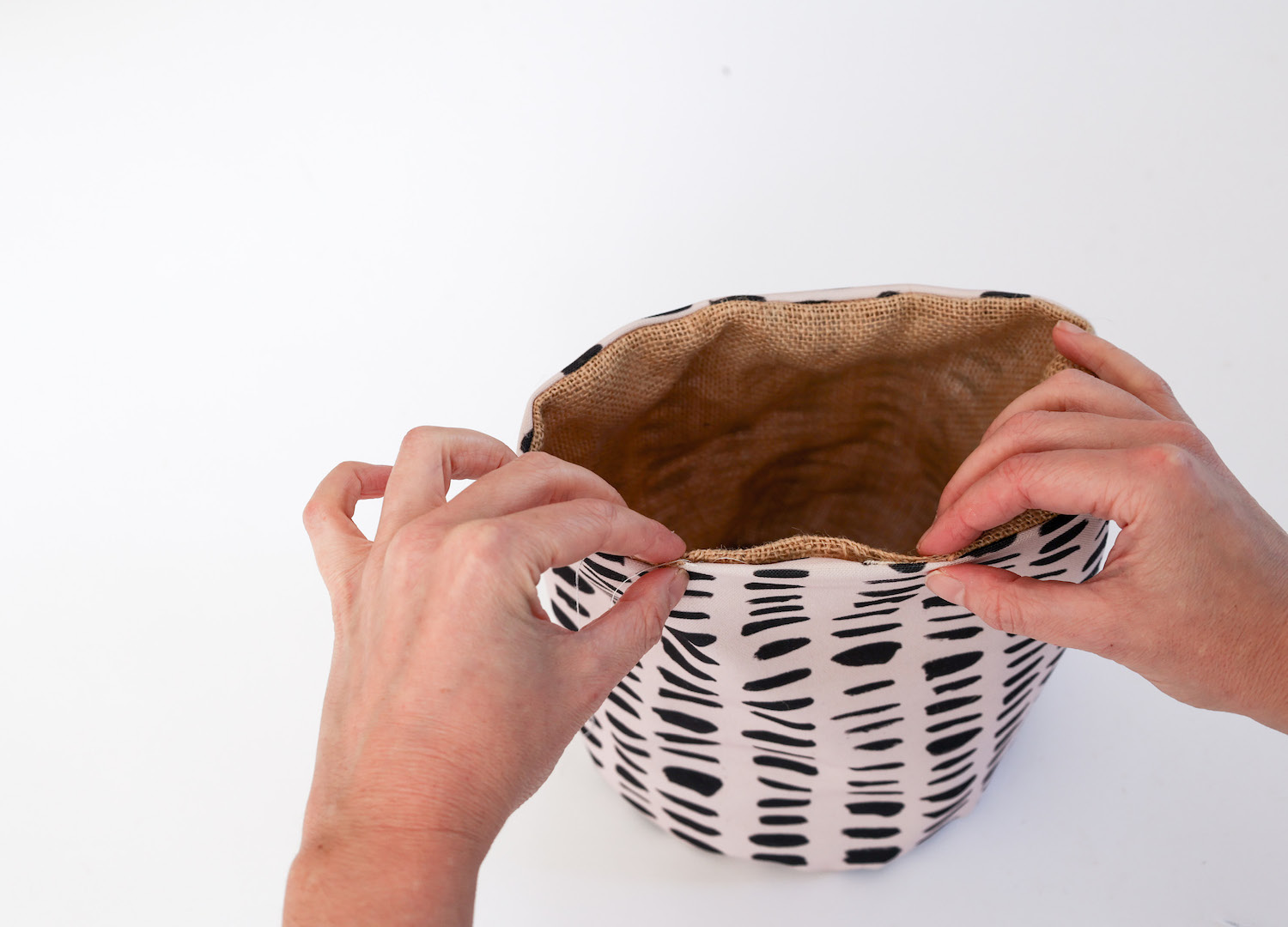
STEP NINE // To close the gap, tuck the raw edges inside and press around the edge.

STEP TEN // To finish, top stitch around the edge and give your planter a final press.
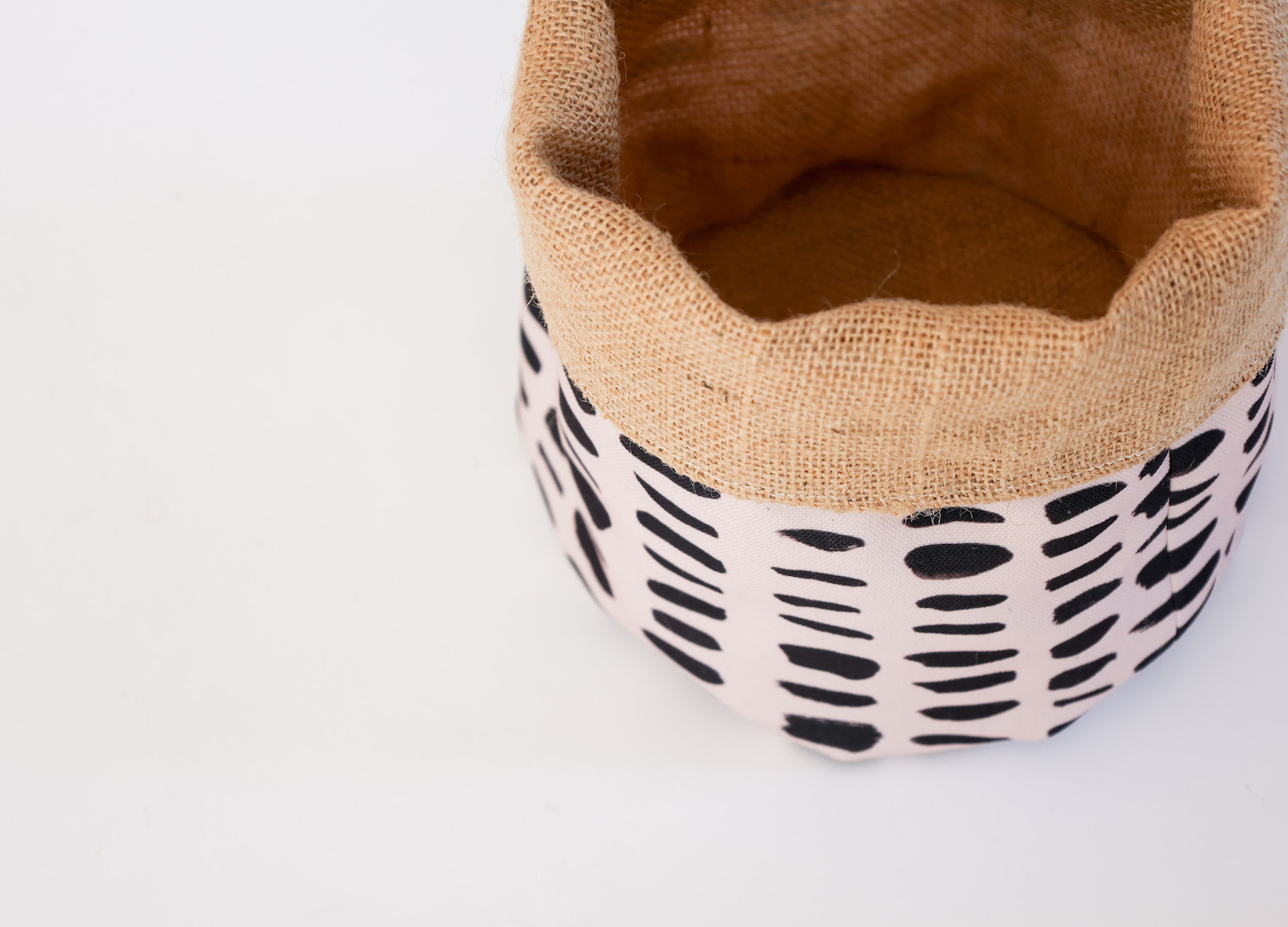
BONUS | HANGING PLANTER HACK
Take your fabric planter to new heights – why not create a hanging planter by adding metal eyelets and rope. You can find eyelet punching kits (which include the tools) in the haberdashery section of your local fabric store.
PHOTOS AND WORDS: SOPHIE PARSLOW FOR PEPPERMINT.
JOIN OUR MAILING LIST
Brighten up your inbox with our not-too-frequent emails featuring Peppermint-related news, events, competitions and more!
explore
More articles
When you hang a painting on a wall, the story stays put. But when you wear a beautifully made garment that may as well be a piece of art? The story travels. It moves through the world with you –…
We all do it: fire up the car for a 5-minute drive to pick up groceries, drop off sewing supplies, or run a quick errand…
Here’s a question: who decided that natural fibres aren’t a great fit in activewear? For Geraldton mum-of-four Jade Payne, that question became paramount after a…
Fancy a getaway in a heritage building that was once a hospital, an orphanage AND a school in a previous life? Despite what your initial…
When the algorithm gods reward dance trends over hand-thrown ceramics, and building a website feels more stressful than a tax return, where’s a maker to…
Time-travelling lungfish floating in a mosaic of glass tiles, a four-breasted female empowerment goddess cast in bronze, and a striking botanical sculpture spanning 15 metres,…
Hang out with us on Instagram
“Crafting is something that has come naturally since I was small and I just haven’t stopped. When I was smaller, I was interested in the end result. As I’ve gotten older, I realise it’s the process that keeps me coming back to craft. It’s a meditative state for me and I find the repetitive action of the stitching and felting quite therapeutic.”
Craving a world filled with warmth and whimsy? It’s all in a day’s work for textile artist @Cat_Rabbit, whose latest book, ‘Trinkets’, is bursting with felty food friends to make and cherish. Cat invited us into her universe, filled with cheeky characters, layered storytelling and loads of humour.
Plus: try the super sweet pattern for Cat’s Lucky Pickle, perfect to make as a stocking stuffer, extracted from Trinkets.
Read more from our ‘Just felt right’ feature in Issue 64, at newsagents and stockists now!
Photos: Tatanja Ross @On_JacksonStreet and Cat Rabbit
#PeppermintMagazine #CatRabbit #LuckyPickle #Craft #Crafting #Felting #FeltCrafts #Trinkets #ChristmasDecorations

Our hearts go out to everyone impacted by the Bondi Beach violence, especially the Jewish community. Also to the beachgoers, those who bravely helped and the first responders.
While it`s easy – and understandable – to get caught up in the horror of it all and direct anger at certain groups, remember this quote from teacher and author Erin Gruwell: "Don`t let the actions of a few determine the way you feel about an entire group."
“You don`t fight racism with racism. You fight racism with solidarity," said Bobby Seale of the Black Panthers. And solidarity is exactly what we need right now.
If you are feeling overwhelmed, you are not alone. Remember there is much more kindness in the world than hate. ❤️🩹
@LifelineAustralia has created a Bondi Beach Incident: Wellbeing support guide, where you’ll find information about common reactions, reassurance that what you’re feeling is valid, and ideas for taking care of your wellbeing.
https://lifeline.org.au/bondi-incident
You can also call Lifeline on 13 11 14, text on 0477 13 11 14 or chat at lifeline.org.au/crisis-chat anytime, no matter how this has impacted you.
@BeyondBlueOfficial is also available with free 24/7 support by phone on 1300 22 4636 or webchat at https://www.beyondblue.org.au/
Register.Find.Reunite. has been activated by @RedCrossAu to help people reconnect with family and friends. Visit redcross.org.au to access the service.
@NSWPolice Public Information and Inquiry Centre (PIIC) is operating 24/7 on 1800 227 228 for information relating to people impacted.
@LifeBloodAu is supporting Sydney hospitals. O- and O+ blood are always in high demand in emergencies. To donate (from anywhere in Australia – all states are welcome and helpful!) call 13 14 95 or use the Lifeblood app.

Just a reminder… from @SugarHouseCeramicCo
This holiday season be kind, patient and shop local!
#ShopSmall #ShopLocal #SupportSmallBusiness

✨️ Our website is getting a glow-up! ✨️
Sorry for the inconvenience but it will be offline for a few days. You can still purchase subscriptions (perfect for chrissy presents!) via the links on the holding page.
Last year we were extremely excited to receive funding from the Meta Australian News Fund, in partnership with the Walkley Foundation. The result of this is a fabulous new website, with a sustainable fashion and sewing directory that will follow early next year. We`ve worked with the lovely Amy and Jenny at @CrumpetClubHouse who have been making the magic happen – we can`t wait to show you the outcome! ✨️
In the meantime, please get in touch if you need help with anything – hello@peppermintmag.com
We`ll see you on the other side! 🌈

🎀 12 DAYS OF XMAS GIVEAWAYS 🎀
🎄On the 12th day of Christmas, we’re giving away… a GREENPAN FROST ICE CREAM & FROZEN DRINK MAKER! 🎄
Ice, ice, baby! Calling all kitchen magicians and dessert devotees: it’s time to churn, blend and devour your way to frozen heaven. It’s our final giveaway – and hoo girl, it’s a goodie! Thanks to the clever folks at @TheOriginalGreenPan.Anz, one reader will cool their mitts on the Frost Ice Cream & Frozen Drink Maker – perfect for conjuring up home-made gelato, sorbet, smoothies, slushies and more!
Valued at $599, the Frost Ice Cream & Frozen Drink Maker is designed with GreenPan’s signature Thermolon™ ceramic non-stick coating, so you can whip up summer-ready sweet treats free of PFAS, PFOA, lead and cadmium.
To snag this frosty prize, follow @TheOriginalGreenPan.Anz and tag a friend in the comments below before midday AEST 15 December! (Australian and New Zealand addresses only, please.) Good luck!
Update: The lucky winner of our final giveaway is @just__for__van - congrats! We`ll dm to get your details. Well done! 🎉
#PeppermintMagazine #12DaysOfChristmas #12DaysOfGiveaways #GreenPan

Oh hey 👋🏼 Just a little reminder that our subscriptions are sent in paper envelopes, which is a bit of a rarity in our industry. 💅🏼
If you need more reasons to subscribe, how about these:
💌 Enjoy a new issue arriving in your letterbox every six months.
💌 Subscribers exclusively receive FOUR digital sewing patterns per year!
💌 You’ll be the first to get your hands (and needles) on our patterns with early access.
💌 Get a 20% discount code on back issues of Peppermint so you can start your collection today!
💌 Automatically go in the draw to win amazing prizes each issue.
💌 Feel good about your subscription arriving in plastic-free postage.
💌 Support a small, women-led Australian business.
💌 Help us make the world a better place!
And... it`s a perfect Christmas present! We have a downloadable card you can print to go with your gift.
💌 Link in bio!
#PeppermintMagazine #SupportSmallBusiness #ShopLocal #ShopSustainable #PlasticFree











